We are now in the second year of ther Garden Space Program. I learned a lot in 2018, but to be honest, in terms of actual mission it was a complete disaster. Radio communication didn't work properly, solar power was only working for a few days at a time and we got little to no science done.
So i decided to reboot the program and change building material, mission goals and revamp RF24 radio communications.
RF24 radio communications
Let's start with the obvious and most annoying problem: Radio communications. I just couldn't get it work work reliably in 2018.
Turns out there is a bug in the RF24 Arduino library (only found that out a few days ago after googling a lot). It tries to use very high SPI speeds. Those don't work well unless you have a printed circuit board with short traces and perfect radio modules. So i forked the newest version on the library into my GSP source tree and changed the pseudo-autoconfiguration to a fixed one with much lower SPI bus speeds. Suddenly, it works much more reliable - and more importantly, it now works with my shielded RF24 modules as well.
Ah yes, the shielded modules. Bought a ten pack of those from China as well as a ten pack of good 2.4GHz antennas. The problem with range seems to have disappeared. At least as far as i can tell testing within the house. Yes, i'm still keeping to the GSP rules i set out in 2018, so i can only test inside the house. Everything outside can only be done during a mission. (Exception is my balcony for testing solar panels).
As well as upgrading my "modem" next to my desktop with a shielded module and the new antenna, i also placed two "Deep Garden Network" modules near the roof of my house in opposite ends that can relay communication. The DGN modules run the relais code i designed for the GEO sats, updated a bit but mostly the same.
And "Why DGN?" you may ask. It's a bit like the "Deep Space Network" (DSN) NASA has, but cheaper and with somewhat lower range. It only needs to reach all of my garden and (hopefully) into my little piece of forest.
DGN1
The DGN1 hardware is, in essence, my old modem with the old (unshielded) RF24 module but with the new antenna. While not perfect, this seems to have increased radio communication reliability and range quite a bit. It's installed in the guest bedroom (upstairs). It serves mostly as a backup for DGN2 which has the new radio modules. DGN1 also provides coverage for a small part of the Garden that may or may not be in radio shadow for DGN2. DGN1 also serves as a testbed (additional link) for message relay testing.
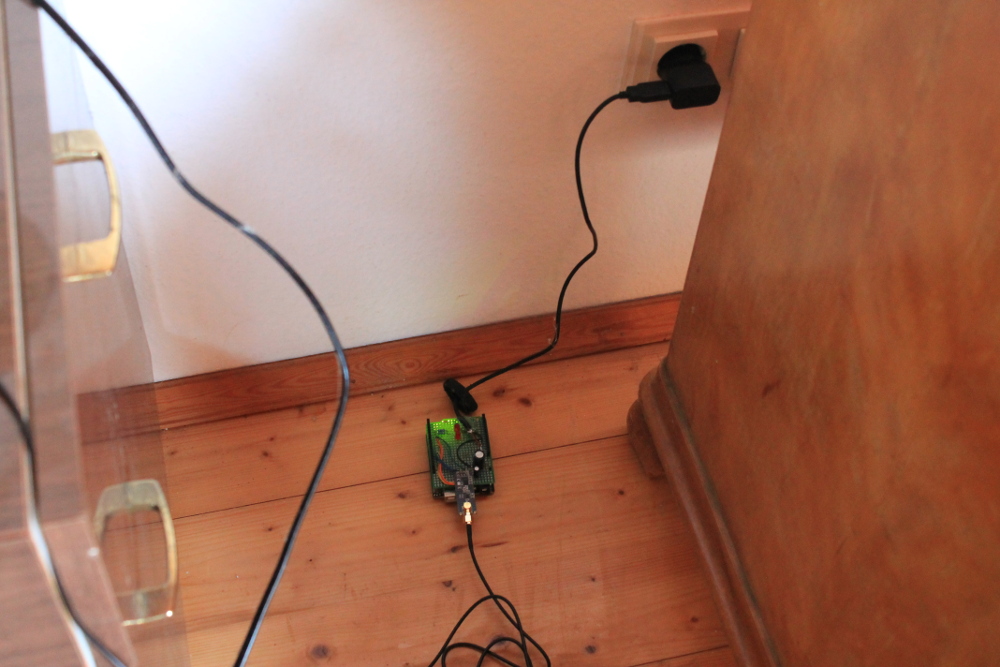

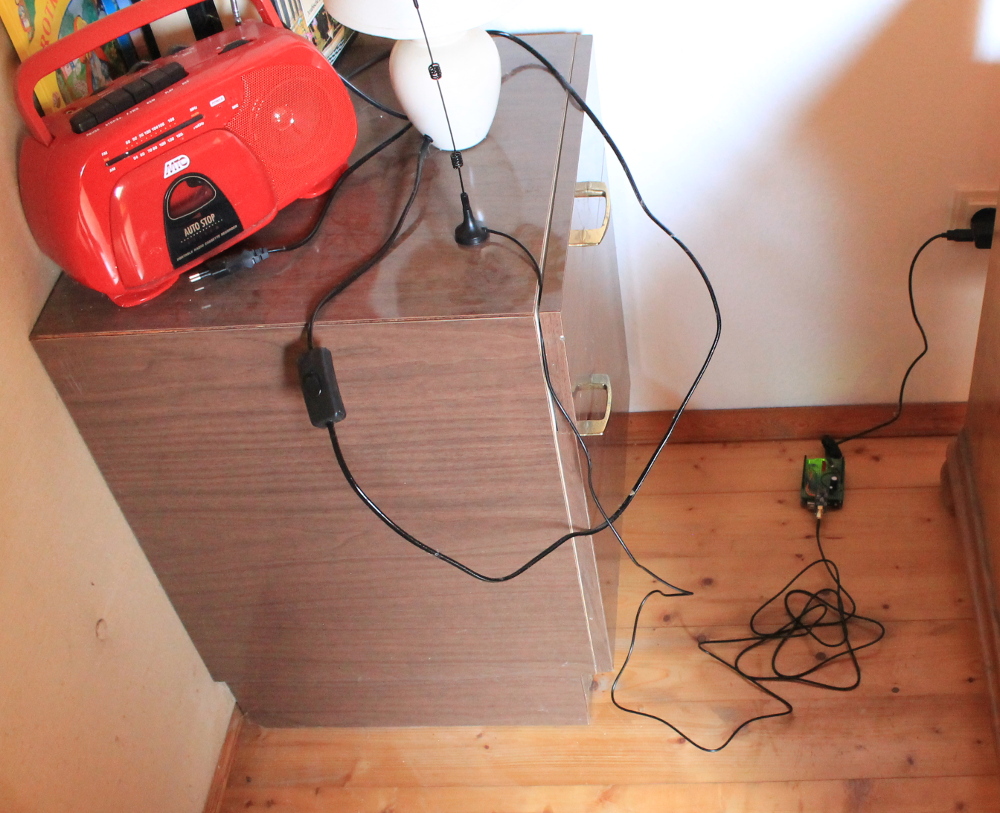
The guest bedroom is hardly ever used, because it's in the attic (west side of the house) and you have to climb a ladder to reach it. And no, i don't have an idea what the original builders of the house were thinking. Probably not much.
Anyway, since the room is hardly ever used, this ghetto setup will suffice until i can come up with a better solution.
DGN2
DGN2 it based on the new RF24 modules and new antenna.
I also used an Arduino Mega (since i had it at hand). This will make it easier to hook up more stuff in the future like MRAM and/or an SD card reader. Currently, forwarding messages takes time, which limits the bandwidth even further. With the possibility of recording data directly on DGN2 and then playing it back later (or even just going upstairs and yanking out the SD card), big data transmissions could get a speedup for future missions. Same goes for one-time measurements from probes without storage. Having a backup in DGN2 might mean i can restore data downloads i have lost because something went wrong on my computer or with my "modem" Arduino.
The DGN2 antenna is mounted near the (inside) top of the roof in the attic (south side of the house), wich should maximize range into most parts of my garden and forest.
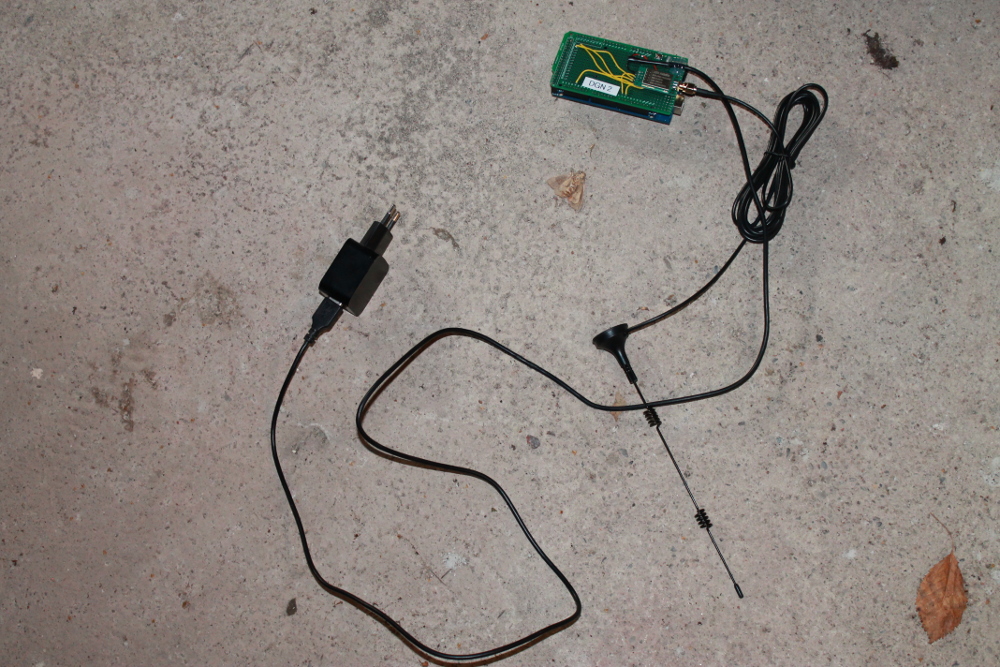
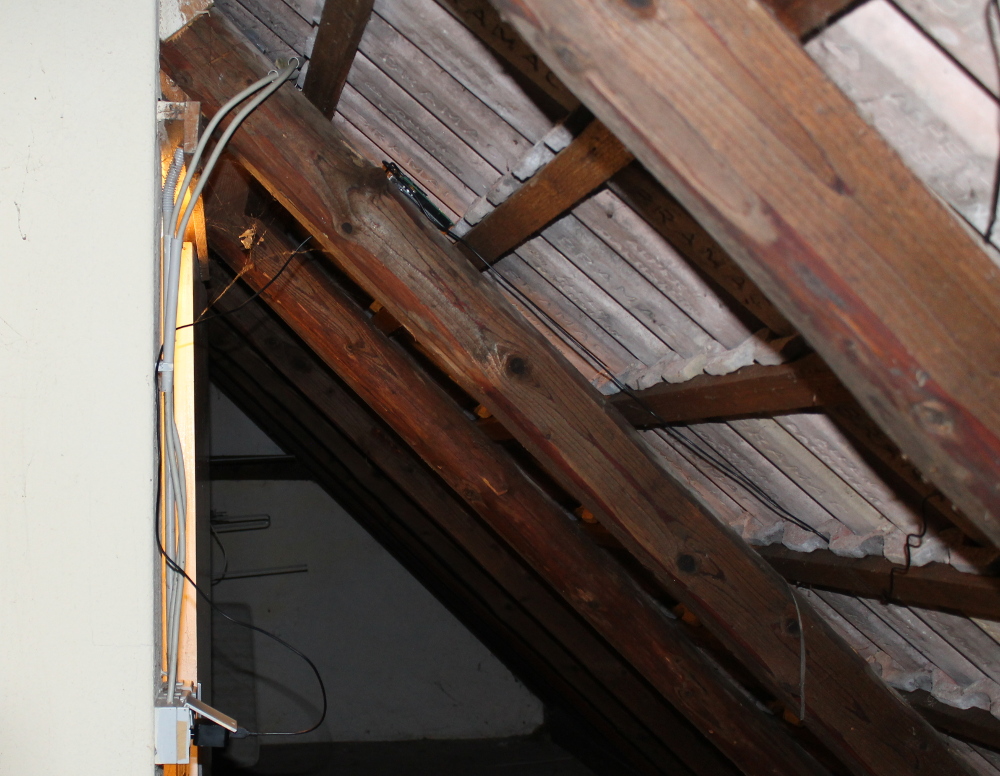
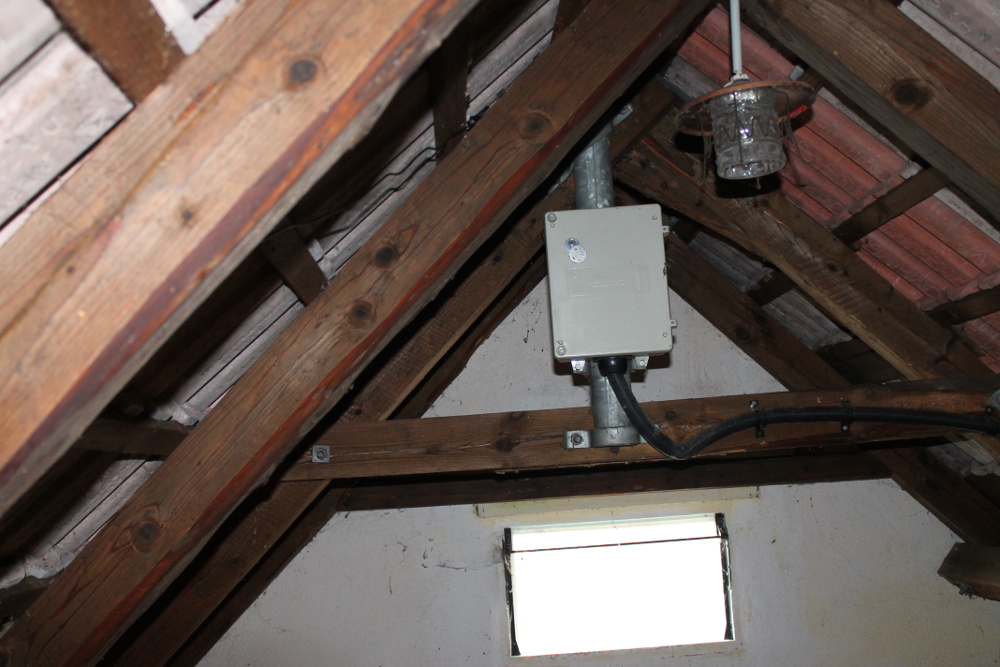
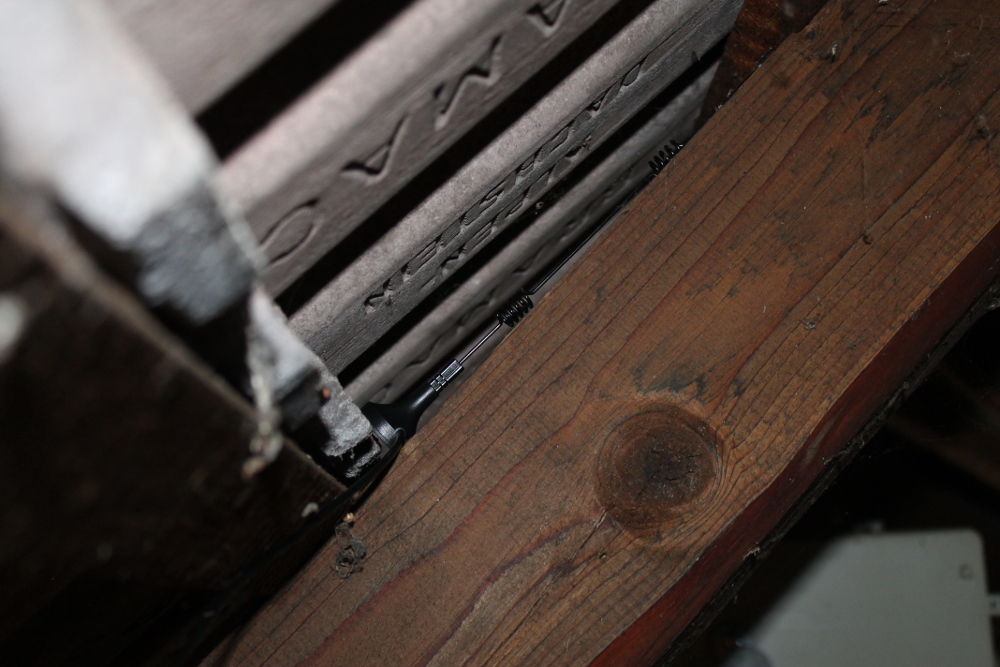
Building materials
In 2018, i tried to use the cheaped materials i could think of: Wood and Duct Tape. Didn't work out so well. The combination of sun, heat and rain allowed to much water it and started to corrode my electronics. This also affected my solar panels and made power generation a challenge.
For 2019, i decided to use even cheaper replacement materials: Plastic and Hot Glue. First mission will actually use a plastic box that was packaging for christmas lights. The two solar panels (cheap sealed chinese "6v" ones that are more like "5v") are hot-glued to a spare piece of plexiglas that was leftover from 2018.
After putting everything together, the solar panels will be hot-glued to the plastic box to seal everything. Except a small hole on the botton on the lowest part of the box - just to make sure that any water that may sneak in despite my efforts has a way out.
And don't woorry for the duct tape. It might still be used in places because the silver side reflects sunlight and helps to prevent overheating the box.... maybe... i hope... who knows...
The DIY solar panels are not out of the picture. But for the first mission or two, i'll try cheap pre-made ones in an effort to minimize things that can go wrong.
Mission goals
Last year, i tried to cram as much as possible into each lander design. Which resulted in not a single design working. This year, i'll try the "Faster, Better, Cheaper" approach. Do a mission with a single science goal, and as few engineering goals as possible.
I'm also completely giving up trying to do complex stuff with Arduinos. If i need complex stuff (cameras, ability to update probe software, scripting, image recognition, waypoint navigation for rovers etc), i'll use a Raspberry PI. In that case, i'll have an Arduino as power manager with it's own RF24 module and do the complex stuff on the Rapberry PI (whenever it is turned on).
First mission in 2019 will be "Waterfeeler". It will have three basic sensors to detect air humidity, rain and and soil conductivity. Its science goal is to detect rain. Its engineering goals are to validate my hardware for solar operation and RF24 communication. But more on that in a later post this week.
|


